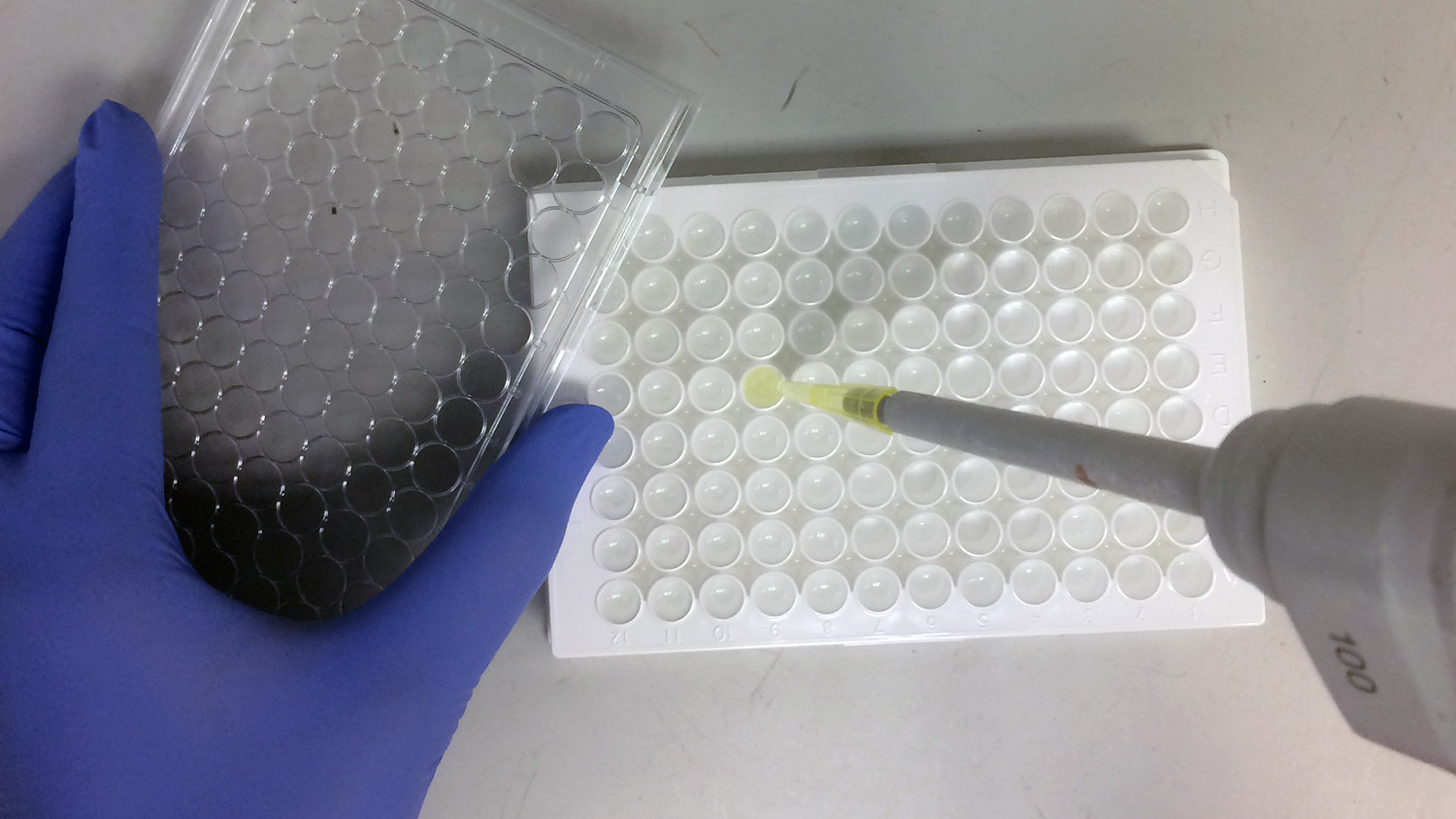Technique Expedites Chemical Screening to Prioritize Toxicity Testing

Researchers from North Carolina State University have developed a high-throughput technique that can determine if a chemical has the potential to activate key genes in seconds rather than the typical 24 hours or more. The technique can be used to prioritize chemicals for in-depth testing to determine their toxicity.
“There is a large backlog of chemicals awaiting toxicity testing, which is both time consuming and expensive,” says Gerald LeBlanc, head of the Department of Biological Sciences at NC State and corresponding author of two papers on the work. “This new approach can help us identify chemicals that are more likely to pose an environmental hazard and, therefore, should be prioritized for testing. And this technique could also be used to assess and prioritize chemicals for human toxicity testing.”
Currently, high-throughput techniques rely on “reporter genes.” This means that chemicals are introduced into a cell and, if they activate the reporter gene, a measurable response can be observed in a day or so.
But the new approach works much more quickly by making use of the fact that the first step in triggering a cellular response is for the chemical to bind target proteins, which cause the target proteins to recruit other proteins.
Specifically, the NC State researchers modified two proteins: Met, which is a target protein, and SRC, which is the protein that Met recruits when it is bound by the chemical.
The modified Met emits light at a wavelength of 535 nanometers when it recruits the modified SRC. And that light is a signal that can be easily monitored and measured.
“If we introduce a chemical to the system, we can tell almost instantaneously whether the chemical has stimulated the recruitment of SRC to Met,” LeBlanc says. “And by measuring the intensity of the light, we can also assess the potency of the chemical to activate this pathway.
“Because the Met-SRC complex regulates a gene that controls reproductive development in crustaceans, we know that such activity means there is a significant likelihood of environmental toxicity – enough to make it a priority for in-depth toxicity testing,” LeBlanc says. “This is an approach that could be applied to a wide variety of potential target proteins for virtually any species, and could significantly expedite screening of chemicals for prioritization.”
The most recent paper, “Ligand-Mediated Receptor Assembly as an End Point for High-Throughput Chemical Toxicity Screening,” is published in the journal Environmental Science & Technology. Lead author of the paper is Elizabeth Medlock Kakaley, a former Ph.D. student at NC State. The paper was co-authored by Stephanie Eytcheson, a Ph.D. student at NC State.
The earlier paper, “Agonist-mediated assembly of the crustacean methyl farnesoate receptor,” was published in the open-access journal Scientific Reports. Medlock Kakaley was lead author. The paper was co-authored by Helen Y. Wang, a former research associate at NC State.
The work was done with support from the U.S. Environmental Protection Agency under grant RD-835165.
-shipman-
Note to Editors: The study abstract follows.
“Ligand-Mediated Receptor Assembly as an End Point for High-Throughput Chemical Toxicity Screening”
Authors: Elizabeth K. Medlock Kakaley, Stephanie A. Eytcheson and Gerald A. LeBlanc, North Carolina State University
Published: July 14, Environmental Science & Technology
DOI: 10.1021/acs.est.7b02882
Abstract: The high throughput screening of chemicals for interaction with intracellular targets is gaining prominence in the toxicity evaluation of environmental chemicals. We describe ligand-mediated receptor assembly as an early event in receptor signaling and its application to the screening of chemicals for interaction with targeted receptors. We utilized bioluminescence resonance energy transfer (BRET) to detect and quantify assembly of the methyl farnesoate receptor (MfR) in response to various high-production volume and other chemicals. The hormone methyl farnesoate binds to the MfR to regulate various aspects of reproduction and development in crustaceans. The MfR protein subunits Met and SRC, cloned from Daphnia pulex, were fused to the fluorophore, mAmetrine and the photon generator, Rluc2, respectively. Ligand-mediated receptor assembly was measured by photon transfer from the photon donor to the fluorophore resulting in fluorescence emission. Overall, the BRET assay had comparable or greater sensitivity as compared to a traditional reporter gene assay. Further, chemicals that screened positive in the BRET assay also stimulated phenotypic outcomes in daphnids that result from MfR signaling. We concluded the BRET assay is an accurate, sensitive, and cost/time efficient alternative to traditional screening assays.
“Agonist-mediated assembly of the crustacean methyl farnesoate receptor”
Authors: Elizabeth K. Medlock Kakaley, Helen Y. Wang and Gerald A. LeBlanc, North Carolina State University
Published: March 21, Scientific Reports
DOI: 10.1038/srep45071
Abstract: The methyl farnesoate receptor (MfR) orchestrates aspects of reproduction and development such as male sex determination in branchiopod crustaceans. Phenotypic endpoints regulated by the receptor have been well-documented, but molecular interactions involved in receptor activation remain elusive. We hypothesized that the MfR subunits, methoprene-tolerant transcription factor (Met) and steroid receptor coactivator (SRC), would be expressed coincident with the timing of sex programming of developing oocytes by methyl farnesoate in daphnids. We also hypothesized that methyl farnesoate activates MfR assembly. Met mRNA was expressed rhythmically during the reproductive cycle, with peak mRNA accumulation just prior period of oocytes programming of sex. Further, we revealed evidence that Met proteins self-associate in the absence of methyl farnesoate, and that the presence of methyl farnesoate stimulates dissociation of Met multimers with subsequent association with SRC. Results demonstrated that the Met subunit is highly dynamic in controlling the action of methyl farnesoate through temporal variation in its expression and availability for receptor assembly.
This post was originally published in NC State News.